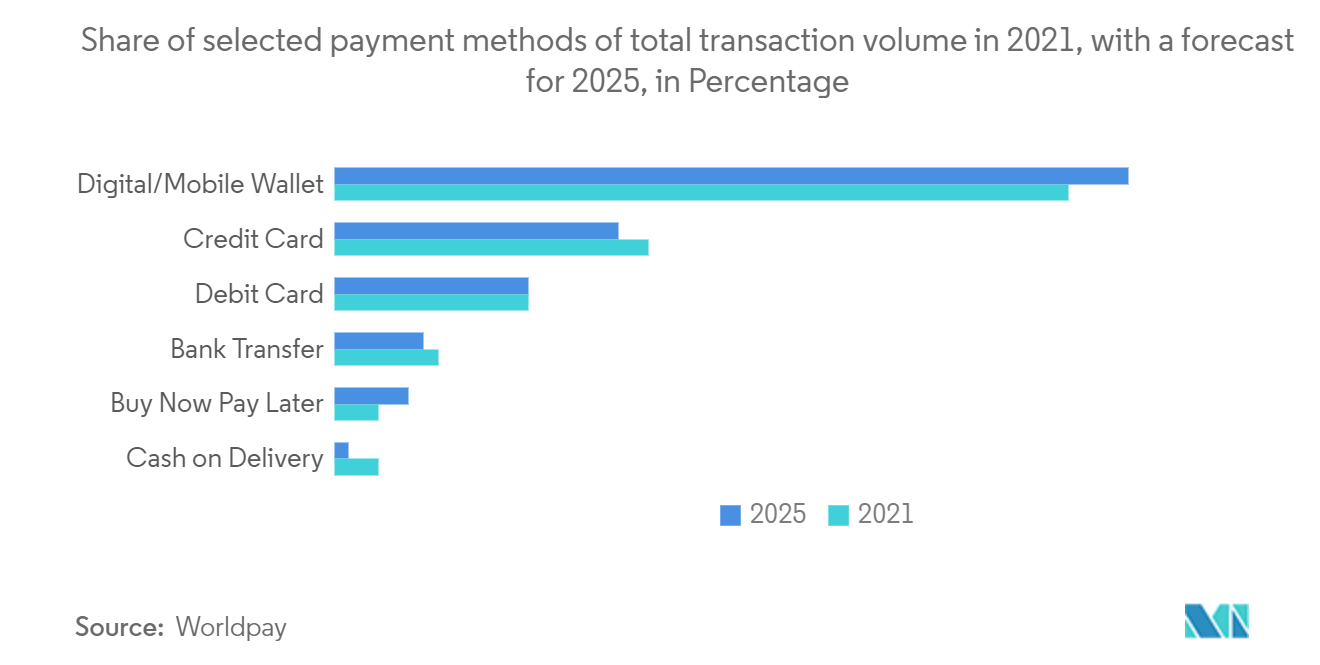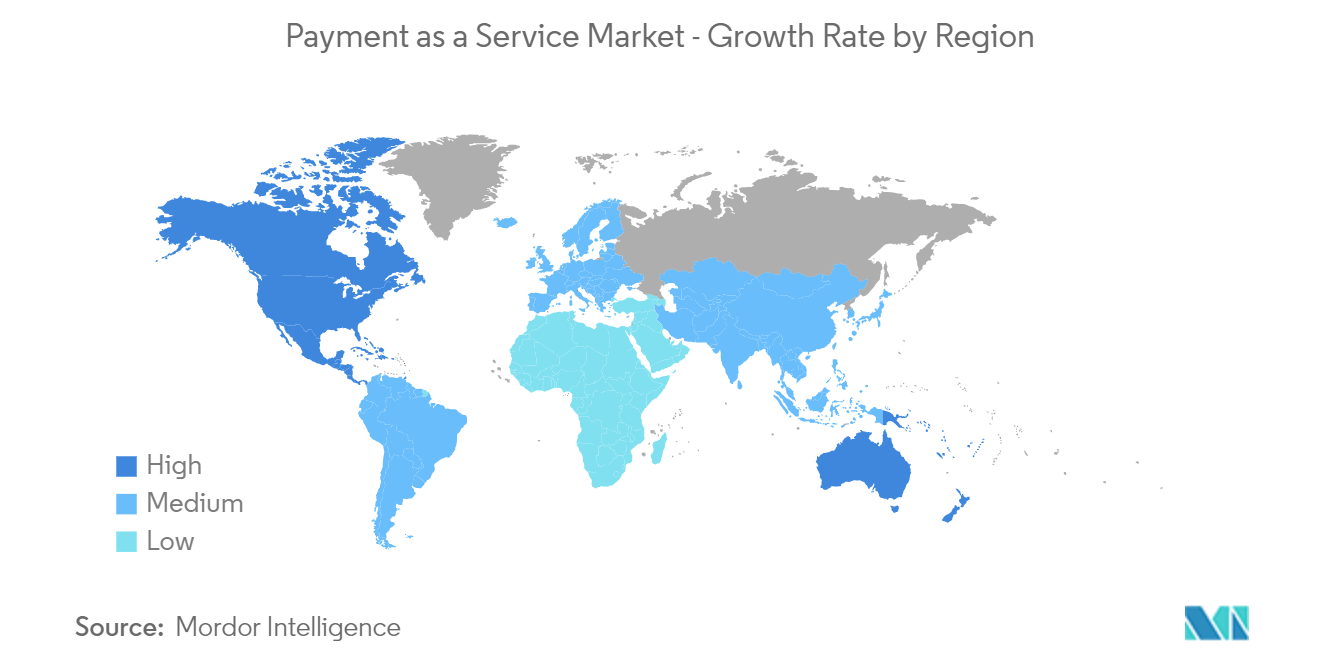Market Trends of Payment as a Service Industry
This section covers the major market trends shaping the Payment as a Service Market according to our research experts:
Retail Sector Expected to be a Significant Contributor
- Retailers are rapidly adopting digital payment technology to bring more convenient experiences to their customers, owing to the massive growth in the e-commerce industry. According to the Mobile Payments Conference, 2.5 billion people worldwide prefer online shopping. By 2025, the number will grow to 4 billion digital buyers. According to the British Retail Consortium (BRC), debit cards account for 42.6% of all transactions, whereas cash is 42.3%. According to UK Finance, 77% of all UK retail spending was made by cards.
- Merchants are increasingly implementing cutting-edge technologies to boost their presence and visibility in the market. For instance, the biggest retailer in the world, Walmart, recently said that PayPal Cash Mastercard would be accepted for in-store purchases. The merchant wants to incorporate the payment provider's service so that customers can use the PayPal mobile app to withdraw cash and top up their accounts at Walmart locations.
- In addition, many companies that offer payment services are growing their operations to boost their market presence. For instance, the world's most extensive online retailer's online payment system, Amazon Pay, rolled out "buy now pay later" capabilities to local retailers. Amazon has already introduced the payments service in the department store chain Shoppers Stop, in which the online retailer owns a 5% stake and sets up the necessary infrastructure at the grocery chain More.
- Another significant benefit of digital payment is the ability to collect customer data for marketing purposes. This enables retailers to build customer relationships after their visit or purchase and further work toward customer acquisition and retention.

Asia-Pacific to be the Fastest Growing Region
- The Asia-Pacific region is expected to depict substantial growth owing to the increased demand for integrated payment solutions and advancements in payment technologies in the region. Furthermore, the rise in the penetration of smartphones and internet penetration in the region is propelling the market.
- Countries in the region, such as Japan, China, Australia, South Korea, and New Zealand, contribute significantly toward the growth. For instance, the Asian Payments Network (APN) is a group of 11 Asian countries that include China, Japan, Singapore, Malaysia, Thailand, South Korea, New Zealand, Vietnam, Indonesia, Philippines, and Australia to promote cross-border banking transactions in the region.
- Many small retailers earlier relied more on cash but rapidly deployed digital payments to remain competitive in the market. For instance, as the Indian government launched a demonetization program, consumers were forced to use electronic payments.
- Various payment service providers also invest in the Asia-Pacific region to expand their businesses by tapping the growing market. For instance, the firm Infibeam intends to expand its global presence in the digital payments market by aggressively promoting its flagship brand CCAvenue, a provider of digital payment gateway infrastructure in India with an annual run-rate of USD 47 billion.


